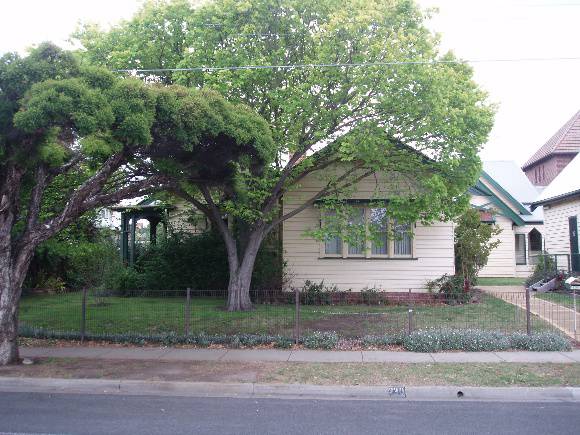| Back to search results » | Back to search page » |
|
St. Matthew's Anglican Church
Location230 McKillop Street, GEELONG VIC 3220 - Property No 216005 LevelIncl in HO area indiv sig |
|
Statement of Significance
C Listed - Local Significance STATEMENT OF SIGNIFICANCE The St. Matthew's Anglican Church complex, 230 McKillop Street, East Geelong, has significance for its associations with the development of the Anglican Church in East Geelong in the early 20th century, and especially for its intact and distinguished interwar Arts and Crafts Gothic styled Church building. Built in 1928 to a design by the well-known Melbourne Louis Williams, this building appears to be in good condition when viewed from the street. The St. Matthew's Anglican Church at 230 McKillop Street is architecturally significant at a LOCAL level. It demonstrates original design qualities of an interwar Arts and Crafts Gothic style. These qualities include the predominantly cruciform plan illustrated by the steeply-pitched gable that traverses the site, jettied jerkin-head roof form that projects towards the west and the hipped roof form that projects to the east. Other intact or appropriate qualities include the unpainted brick wall construction, terra cotta tile roof cladding, small projecting porch gable fronting Normanby Street with punctuated corner piers, heavy diagonally-buttressed tower with parapet, pointed unpainted brick buttresses along the side, heavy corner piers at the northern end with incised panelling, pointed leadlight windows along the side elevations of the main gable (accentuated by red brick surrounds), pointed tripartite window (with label moulds above) and the stylised rose window (with rendered cement surrounds and tracery) under the projecting jerkin-head roof, narrow vertical ventilation openings in the tower, incised brick porch door opening (with label mould above), double timber doors, and the flat-roofed porch that projects from the south-east corner, and the parapeted brown brick porch on the north facade with its projecting piers, leadlighted rectangular windows, concrete steps and large door opening. Internally the furniture, sanctuary furniture, memorial pulpit and peace memorial pipe organ also contribute to the significance of the place. The small hall to the east of the main Church building, and the projecting gables of the renovated hall/extension further contribute to the significance of the place. The St. Matthew's Anglican Church at 230 McKillop Street is historically significant at a LOCAL level. It is associated with the development of the Anglican Church in East Geelong from 1928. The Church building also has associations with Louis Williams, prominent Melbourne architect of numerous early 20th century Anglican, Methodist and Catholic churches. The St. Matthew's Anglican Church complex at 230 McKillop Street is socially significant at a LOCAL level. It is recognised and highly valued by sections of the East Geelong community for religious reasons. Overall, the St. Matthew's Anglican Church complex at 230 McKillop Street is of LOCAL significance. References Miles Lewis, (ed.), Victorian Churches: Their Origins, Their Story & Their Architecture, National Trust of Australia (Victoria), Melbourne, 1991. Miles Lewis, The Australian Architectural Index, 2nd edn., University of Melbourne, Carlton, 2000. Correspondence between Vicki Johnson & Assoc. Prof. Conrad Hamann, Monash University, March 2001. W. Jacobs, V. Johnson & D. Rowe, 'Northern Grampians Heritage Study Stage 2', prepared for the Northern Grampians Shire, in progress, 2002. Reports and Drainage Plans, Barwon Water profis system, 1921, 1981, 1993. Robin, A. de Q., Anglicans in Geelong 1842-1990, 1990, Geelong Historical Records Centre. History of St. Matthew's Church, unacknowledged and undated, Geelong Historical Records Centre. Seaton, Gladys, St. Matthew's East Geelong, in Investigator, Journal of the Geelong Historical Society, June, 1990, Geelong Historical Records Centre. Oral information supplied by former parishioner, Peter Winstanley. Morrow, W.J., Index to the Geelong Advertiser 1888-1900, Geelong Historical Records Centre. Geelong Town Plan 1881, Geelong Historical Records Centre.
Group
Religion
Category
Church




